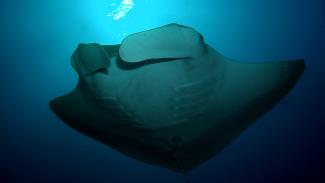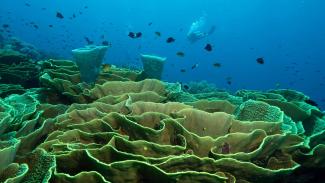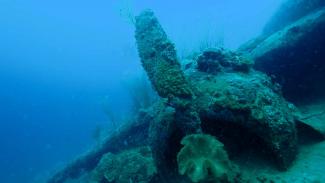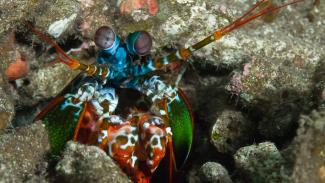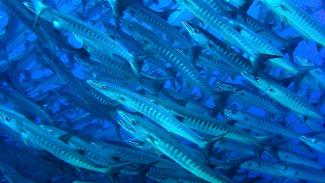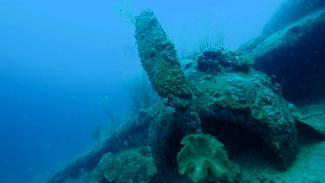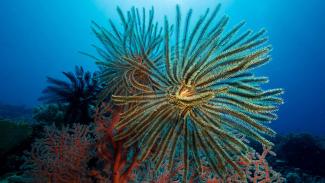Your Essential Guide to the Best Diving in Papua New Guinea
Papua New Guinea, or PNG as it is often known, occupies the eastern half of New Guinea; an island it shares with Indonesia. To the north is the Pacific Ocean, to the south Australia’s Coral Sea and to the east the Bismark & Solomon Seas.
The area is a melting pot of marine life and has some of the most diverse and spectacular scuba diving on the planet. Explore vibrant coral reefs, plunging seamounts and World War II wrecks with resort diving and liveaboard diving options.
For the adventurous, it is the ultimate travel destination where remote, pristine rainforests tumble down from towering peaks into crystal clear waters teeming with life.

Highlights
Finest dive sites in Papua New Guinea
The majority of PNG’s diving hotspots are in the east of the country, either on the south-eastern peninsula around the islands of New Ireland & New Britain.
On the south coast of the mainland, the capital, Port Moresby has excellent diving, while on the north coast, Madang has beautiful reefs and is a hotspot for marine scientists due to its diversity. Further down the coast, Tufi is a region of stunning fjords that is blessed with superb visibility and a wealth of marine life.
At the south-eastern tip of the mainland is Milne Bay. It is one of the countries original and most famous diving areas. The term ‘muck-diving’ was actually coined here and it is still considered one of the world’s best spots for critter hunting.
To the north-east, separating the Bismark & Solomon Seas, New Britain Island has two famous dive areas. Kimbe Bay is a photographers dream - with a huge level of diversity and spectacular corals, while Rabaul is famous for its WWII wrecks. On the tip of New Ireland, Kavieng offers more outstanding diving experiences & plenty of big fish encounters.
Marine life in Papua New Guinea
In terms of marine life, PNG really does have it all. It is one of the best places for Shark encounters, with many species commonly seen from Bronze Whalers to Epaulette Sharks. Eagle Rays and Manta Rays are common, as are large numbers of pelagic hunters such as Tuna, Trevally & Barracuda. In terms of coral life, Papua New Guinea is almost unrivaled. Most of its reefs are still in pristine or almost pristine condition and the diversity of species can only really be matched by Indonesia or the Philippines. These corals hide a wealth of smaller marine life as well, with many rare, cryptic & sought after species such as Pygmy Seahorses, Frogfish & Lacy Scorpionfish. It is also one of the world’s top destinations for wreck diving due to the abundance of WWII wrecks dotted around its coasts, including some very interesting aeroplane wrecks.
Ease of travel
Papua New Guinea has one of the most imposing landscapes of any country in the world, and minimal infrastructure in many places. This makes it incredibly beautiful but difficult to travel around. Roads are conspicuous by their absence and the only practical ways to get around are by boat and by air. Fortunately, the popular diving areas areas all connected by Air Niugini from the capital Port Moresby, so reaching these spots is relatively easy. Travel outside these areas is expensive and difficult though.
People
Papua New Guinea’s people are both diverse & unique. The impenetrable geography of the country has meant that many communities have grown-up in almost complete isolation. Most of Papua New Guinea’s population are still rural, living in traditional villages & making a living from subsistence farming. There are over 800 languages and many communities and cultures were completely unknown to the western world until very recently. There are few more fascinating peoples anywhere in the world.
Safey
Papua New Guinea is very remote. For this reason, safety should always be taken seriously by visitors to PNG. Dive operations and resorts are run to a very high standard though and health & safety are not taken lightly. Port Moresby, the capital, has a high crime rate and a number of social problems as PNG’s many peoples try to make the transition from traditional rural life to modern urban life. This should not detract from visiting the region though as you are likely to be taken straight from the airport to your resort.


